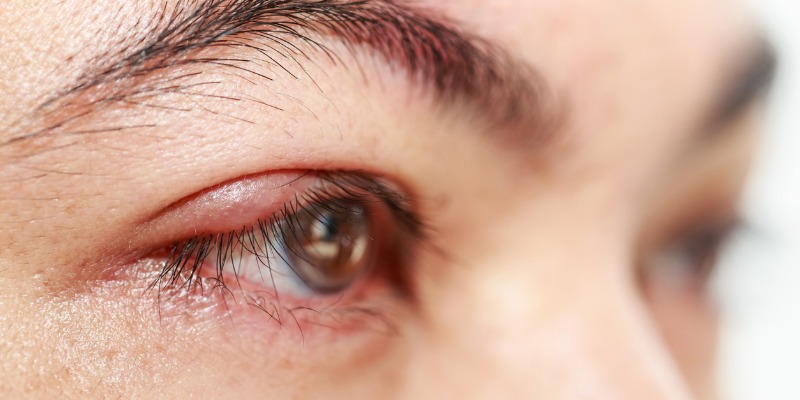Do you regularly wake up with uncomfortable or even painfully crusty eyelids and red, inflamed eyes? If so, this could be a warning sign of an underlying eye condition that may require special eye care and cleansing habits to help alleviate your symptoms and get back to seeing the world through clear, comfortable eyes. Here are some of the most common eye conditions that can cause crusty, inflamed eyelids.
Blepharitis
Blepharitis is a common eye condition characterized by inflammation, redness, itching, dry eye, sensitivity to light, blurred vision, and crusty eyelids and/or eyelashes 1. Although there are a number of factors that can contribute to blepharitis symptoms, one of the most common causes of this condition is an excess amount of bacteria and microscopic mites on the eyelids and lashes. Because of this, blepharitis symptoms are often recurring, especially without a regular eye cleansing routine 1.
Blepharitis sometimes also occurs in conjunction with other skin or eye conditions, such as ocular rosacea, dermatitis, and psoriasis 2.
The first step to managing blepharitis and alleviating its symptoms is to make sure you properly wash your eyes and the surrounding area at least one to two times per day. If you wake up with crusty eyelids, it’s a good idea to use a cleansing product like Cliradex Light or Cliradex Towelettes as soon as you wake up to help eliminate the bacteria and mite population that are likely to blame for your symptoms.
The great thing about these products is that not only do they contain 4-Terpineol, the most active ingredient in tea tree oil, but they have also been specifically formulated to remain gentle and non-irritating on the delicate eye-area skin and eyes. So you can bring Cliradex Towelettes along with you wherever you go and use them as needed throughout the day.
Blocked Tear Duct

Your eyes naturally produce tears to keep your eyes clear and lubricated, but sometimes, the ducts that transport tears from the lacrimal glands above your eyes, down through your eyes and out through tiny holes in the corners of your eyes can become blocked 3. This can happen for several reasons, the most common being an eye infection, eye injury, or another condition such as blepharitis or conjunctivitis (pink eye).
The symptoms of a blocked tear duct can be very similar to those of blepharitis–redness, inflammation, swelling, crusty eyelids, and blurred vision–so it can be difficult to distinguish between the two conditions. Thus, you’ll want to check in with your eye specialist for an accurate diagnosis, in case treatment is needed for an eye infection 3. In either case, your eye doctor may recommend cleansing your eyes regularly to help your eyes heal on their own and help prevent future infections.
Pink Eye

Pink eye, also called conjunctivitis, happens when the mucous membrane covering the front of your eyes, called the conjunctiva, becomes irritated and inflamed 4. The most notable symptom of pink eye is excessive, sticky eye discharge that can sometimes cause the upper and lower eyelids to form a hardened crust and stick together. Pink eye can be caused by bacterial or viral infections, as well as allergies. When it is caused by infection, pink eye can be highly contagious.
Since there are a few different causes of pink eye, the most appropriate treatment method can vary. Viral infections, for instance, do not respond to antibiotics, so the best way to manage this type of pink eye is to simply manage the symptoms and let your body fight off the infection on its own.
For conjunctivitis caused by a bacterial infection, your eye doctor may prescribe antibiotic eye drops to help clear it 4.
If your pink eye is caused by eye allergies, flushing your eye with fresh, clean water and using a gentle cleansing product may help to remove the irritating substance from your eye to help relieve your symptoms.
- Blepharitis – National Eye Institute
- Blepharitis: eyelid swelling and inflammation – Allaboutvision.com
- What Is a Blocked Tear Duct? – American Academy of Ophthalmology
- Conjunctivitis: What Is Pink Eye? – American Academy of Ophthalmology





